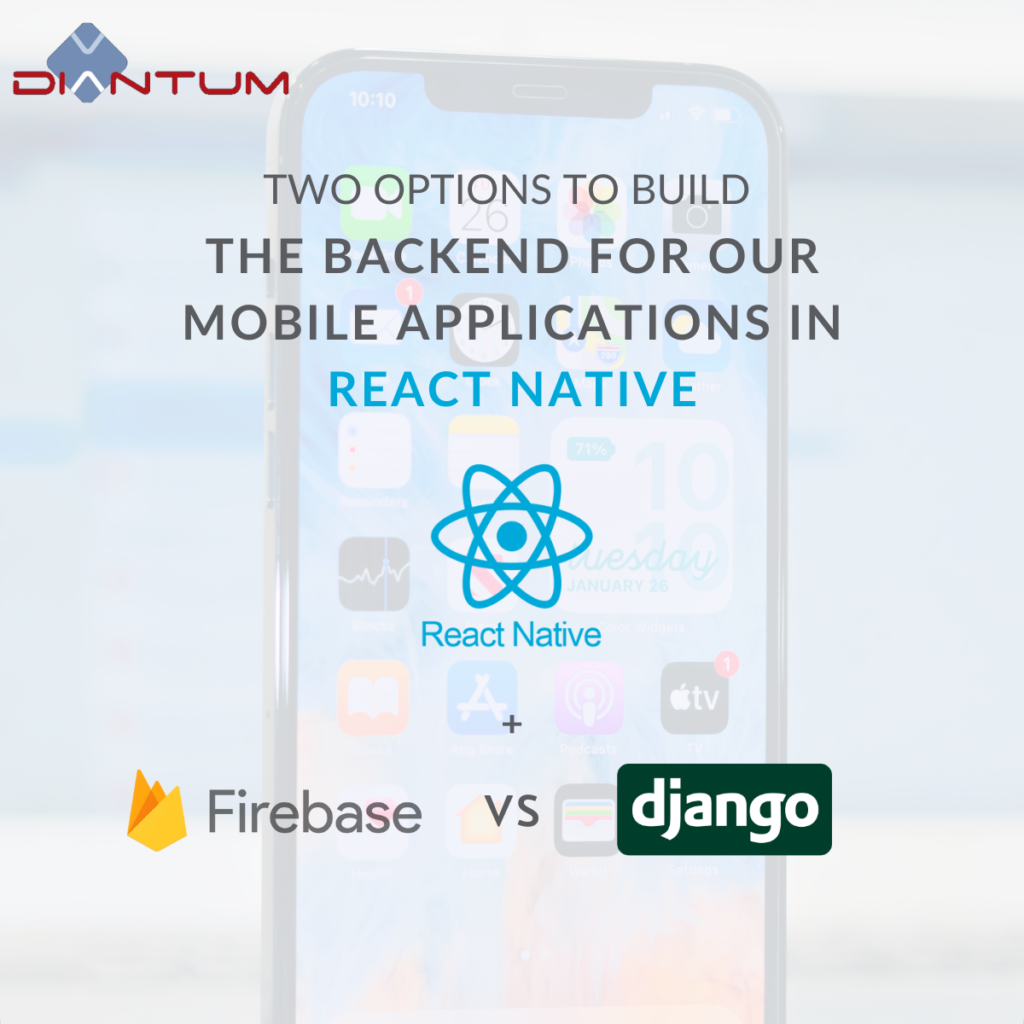Some Options for Building the Backend of Our Mobile Applications.
Integrations Between Django + React Native vs. Firebase + React Native: Which´s the Best Option?
In mobile application development, choosing the right software components architecture is crucial for the success of the project. Today, we want to share a brief analysis between two popular choices: Django with React Native and Firebase with React Native.
Django + React Native
Django is a Python web framework well known for its reliability. React Native allows the development of mobile applications using JavaScript and React, facilitating the creation of iOS and Android applications with a single code base.
Among the advantages of this model are scalability and flexibility, as Django can handle large volumes of data and requests, offering integrated control and security over the backend.Since Django is based on Python, it is easy to integrate artificial intelligence and machine learning libraries. Additionally, those needing to handle asynchronous processes can take advantage of the Uvicorn web server implementation. For managing asynchronous tasks, Django can use Celery, a powerful library for managing background tasks.
However, it should be noted that configuring and maintaining a custom Django backend can be more laborious and time-consuming. Experience in Python and server administration is required to make the most of Django.
Firebase + React Native
Firebase is a Google application development platform that provides a variety of services, such as real-time databases, authentication, and storage, eliminating the need to manage a custom backend.
In this case, the advantages are the speed of development, as Firebase offers a ready-to-use infrastructure, and real-time availability, as its databases and synchronization services are ideal for applications requiring instant data updates. Additionally, we can scale our solution with minimal effort: Firebase handles scalability automatically, allowing developers to focus on the application’s functionality. Regarding asynchrony, Firebase simplifies the handling of asynchronous tasks with Cloud Functions, allowing code to run in response to events without the need to manage servers.
The potential disadvantage in this case is provider dependency, as it is an external service that can change its policies or prices, which poses a risk.
Final Comparison.
Both combinations have their advantages and disadvantages, and the right choice depends on the specific needs and circumstances of your project. Our recommendation is as follows:
– Django + React Native:
Ideal for projects needing a highly customizable and secure solution, with plans to integrate artificial intelligence and machine learning, and when we do not want to establish dependencies on external providers.
– Firebase + React Native:
The best option for projects needing rapid development with real-time synchronization, simple deployment of asynchronous tasks, and automatic scalability.
Conclusion.
The choice between Django + React Native and Firebase + React Native should be based on the project’s goals, budget, time, and resources. Both combinations have much to offer, and the right decision can make a significant difference in the success of your application.
At Diantum, we have combined the best of both models in our architecture to offer modular, scalable, and secure applications that meet our clients’ functional requirements.


